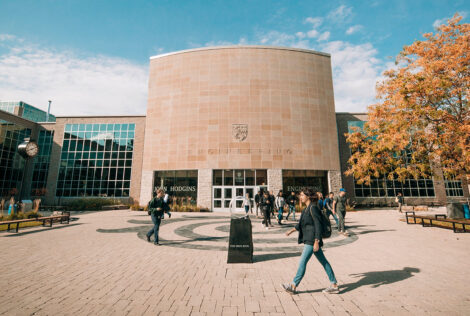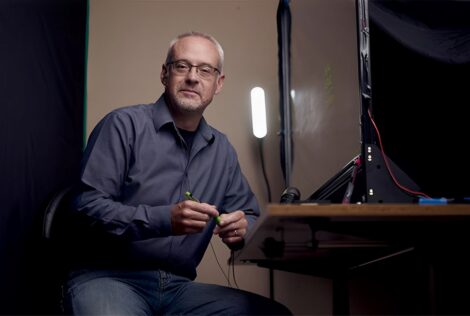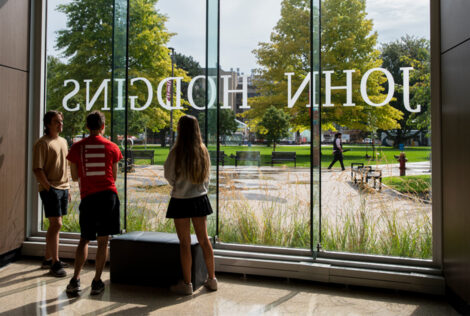
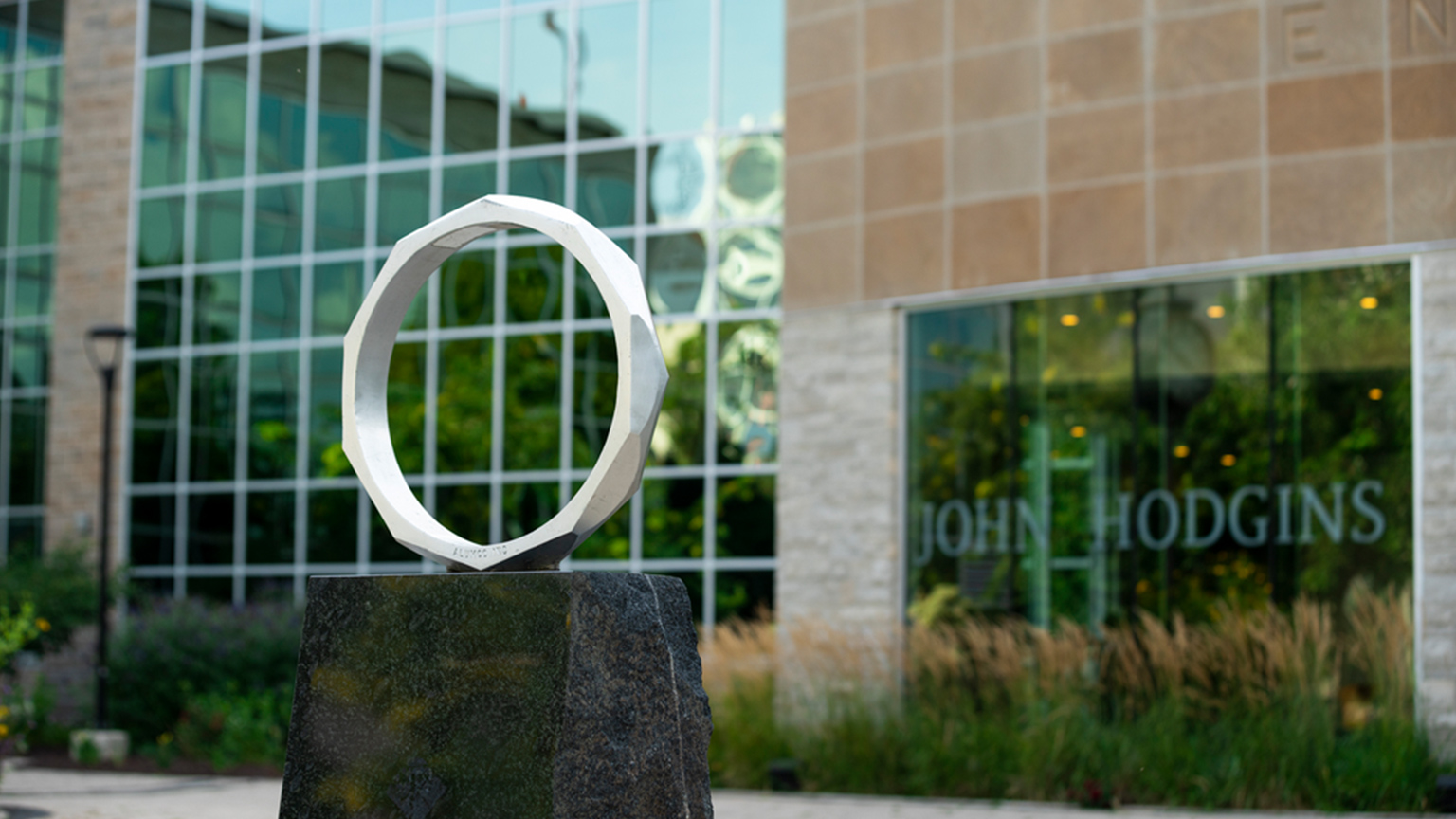
Virtual reality. Gamification. 3D creation platforms. McMaster Engineering instructors have quickly pivoted to ensure students will thrive while learning in a virtual world.
“Our researchers, instructors, staff, and students are quick to embrace change and meet new challenges — and no challenge has been greater than COVID-19,” says Ishwar K. Puri, dean of the Faculty of Engineering.
He notes that McMaster Engineering is working closely with the educational company Quanser to provide leading-edge virtual learning for the new first-year curriculum as well as many upper-year labs.
Puri also notes the Faculty of Engineering has invested close to $1.5 million to support instructors as they transition to online teaching. This curriculum transformation is an integral part of The Pivot, a reimagined approach to undergraduate teaching, learning, and research that McMaster Engineering is launching this fall.
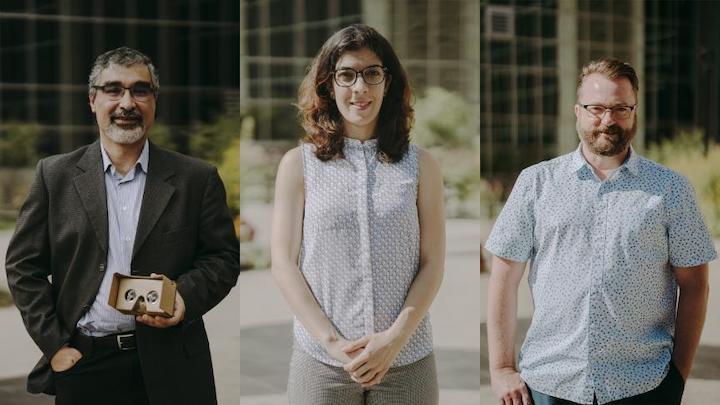
Here are stories of three McMaster educators who have re-engineered their approach for a virtual world:
Our very own ‘Matrix’ of electromagnetism
When the pandemic arrived and classes went online, Mohamed Bakr was ready. He had already spent the last two years working on a virtual reality tool to teach his courses.
“Many students find electromagnetism difficult because of its abstract nature,” says Bakr, professor in the Department of Electrical and Computer Engineering. “With virtual reality, students will be able to visualize the complex 3D nature of electromagnetic fields.”
Working with his colleagues and students, Bakr has developed two new tools, one to teach electromagnetism, the other for circuits and electronics. Students will see themselves in “the lab,” work on experiments, and talk to classmates in real time. “You assemble the circuit as if you were in a real lab,” says Bakr.
Students will download an app, put on Google Cardboard, and go from there. They will also receive a manual with instructions on how to export their work back to the real world.
Bakr is excited about the advantages of this new approach. With increasing student enrolment in the Faculty, there are more constraints on lab time. Now, students can virtually work in a lab any time.
Another important advantage is that students will be able to see what they can’t see in real life.
“In the virtual lab, students can actually see the electromagnetic fields, the different components, and how they travel in space,” says Bakr.
He acknowledges there are many potential applications for the new app, particularly in our locked-down, work-from-home world. But for now, Bakr is focused on getting his courses ready for the new school year.
“It’s all about giving our students a really good learning experience.”
The cornerstone of a great engineering education
Shelir Ebrahimi has a passion for engineering education. That’s good news for students entering McMaster Engineering this fall. She’s part of a team of faculty members who have reimagined the first-year curriculum as an engaging project-based learning experience.
Integrated Cornerstone Design Projects in Engineering creates an immersive, full-year experience for first-year students, who will work together on a series of projects to develop a range of technical and professional skills. “This will lay the foundation for most of the following upper-year classes,” says Ebrahimi, assistant professor in the Department of Chemical Engineering.
The new course has enrolled about 1,100 students. That’s challenging enough in the real world, let alone an online format. Fortunately, in developing the new curriculum over the past few years, the team had already designed it with a virtual world in mind.
“There will be lots of instructional supports and small group activities to help students build their community,” says Ebrahimi, an award-winning educator who joined McMaster as a teaching-stream faculty member in July 2019.
Using Microsoft Teams and virtual technology from Quanser, students will collaborate on projects ranging from programming a robot arm to designing a turbine blade to building a recycling system. The final project will be self-directed, creating solutions for a client in the Hamilton community. By the end of the course, students will have already built an online portfolio.
A team of upper-year students has been working over the summer to test-drive the curriculum.
“We needed to fully change some parts, based on their feedback,” says Ebrahimi. “I’m so glad we had this chance to test our projects.”
Going forward, 11 upper-year students have been engaged as Instructional Assistant Interns to help train the 150 Teaching Assistants needed for the course. “What’s most important is to be consistent in delivering the course, no matter who is doing it,” says Ebrahimi. She’s been awarded a Leadership in Teaching and Learning Fellowship from the MacPherson Institute to study the roll-out of this new educational approach and “to adapt and improve as we go.”
And while she will miss the in-person aspect of teaching, “it will still be a great learning experience.”
A virtual game for a serious real-world problem
“I’d been looking at gamification for many years,” says Cameron Churchill, assistant professor in the Department of Civil Engineering. “So, when the pandemic arrived, I was 100 per cent motivated.”
He realized gamification would be a great fit for one of his classes, “Ethics, Equity and Law in Engineering,” a required course for all McMaster Engineering undergrads.
Over the summer, Churchill has collaborated with students Areeb Khawaja and Bradley Stephens to create a virtual role-playing game that will teach the course curriculum.
“Areeb and Brad have done an amazing job,” says Churchill, who wears many hats including director of the Engineering & Society and Engineering & Management programs, and of McMaster’s Innovation Minor.
In the game, students will form teams of four and establish their own virtual engineering company. They will study Hamilton’s Code Red problem from many angles and propose viable solutions. (“Code Red” refers to the decade-long investigation by The Hamilton Spectator, which has exposed the social and health inequities of the city’s marginalized communities.)
The course experience will include video tutorials, quizzes, badges, fake lawsuits, oral defenses, written assignments, and prizes. There will even be a People’s Choice award.
Although the format is “a game,” Churchill is careful to note they are not making light of the serious problem being studied. Rather, the intention is to instill civic awareness and community engagement. (Churchill also leads MacChangers and the McMaster Grand Challenges Scholars Program.)
The newly gamified course will require students to take on various leadership roles — and share writing duties. Churchill points out that employers are always pining for engineers with communication skills.
His students aren’t the only ones who will be brushing up on their skills, though.
“This new format will teach me a lot,” says Churchill.
Listen to our new podcast on innovative COVID-related research by McMaster engineers who are collaborating with industry to create PPE, develop testing kits and more.
Read more on how McMaster Engineering has pivoted during COVID-19 in a message from Ishwar K. Puri, dean of the Faculty of Engineering.

